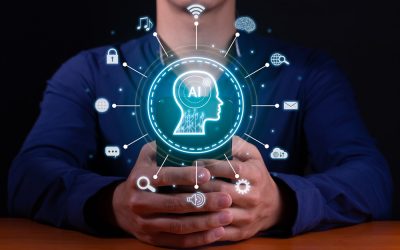Enhancing Products Through Automation: The Path to Fully Autonomous Dark Factories
Automation has become a key driver of efficiency, cost reduction, and innovation in modern businesses. From manufacturing to software development, automation allows companies to optimize operations, reduce manual labor, and deliver seamless experiences to customers. One of the most advanced examples of automation is Fully Autonomous Dark Factories—facilities that operate without human intervention, using artificial intelligence (AI), robotics, Internet of Things (IoT), and machine learning (ML) to handle production 24/7.
This concept of full automation is not limited to manufacturing; it can also be applied to software development, service industries, and product enhancement. By leveraging technologies like Laravel, ASP.NET, Django, Flutter, React.js, React Native, and others, businesses can create highly automated, self-sustaining systems that enhance efficiency, scalability, and user experience.
This article explores how businesses can enhance their services and products through automation, drawing inspiration from fully autonomous dark factories. We will discuss key technologies and strategies that can transform digital and physical products into self-operating systems.
1. The Vision of Full Automation
To understand how automation can enhance services and products, we need to examine what makes Fully Autonomous Dark Factories successful:
- Minimal human intervention: Systems are designed to run autonomously.
- AI-driven decision-making: Machines analyze data and optimize operations in real-time.
- Scalability and efficiency: Processes are streamlined, reducing errors and increasing productivity.
- Cost reduction: Long-term operational costs decrease due to minimal human labor and downtime.
By applying these principles to digital products and services, businesses can create self-sustaining applications, intelligent automation systems, and seamless user experiences.
2. Key Technologies for Automating Services and Products
To build fully automated digital services and products, businesses can leverage the following technologies:
2.1 Laravel (PHP Framework for Web Applications)
Laravel is a popular PHP framework that enables developers to create scalable and automated web applications. Some ways Laravel enhances automation include:
- Task Scheduling: Laravel’s built-in task scheduler automates repetitive tasks like database backups, email notifications, and report generation.
- Queue Management: Laravel queues handle background processes, reducing system load and improving performance.
- API Integration: Laravel seamlessly integrates with AI and machine learning services to automate decision-making.
- Automated Testing: Laravel’s testing tools enable automated unit and functional testing, ensuring high software quality.
Example: An automated inventory management system in Laravel can track stock levels, reorder items automatically, and notify users when supplies are low—mimicking the autonomous decision-making of a dark factory.
2.2 ASP.NET (Enterprise-Level Web and API Development)
ASP.NET is a powerful framework for building enterprise applications with automation capabilities. It enhances automation through:
- Robust AI and ML Integration: ASP.NET applications can integrate with Microsoft Azure AI services to enable predictive analytics and intelligent automation.
- Microservices Architecture: Automates backend processes by running multiple independent services that communicate with each other.
- Identity and Access Management (IAM): Automated security protocols ensure seamless authentication without human intervention.
- Continuous Deployment (CI/CD): ASP.NET integrates with DevOps tools for automated code deployment and testing.
Example: A financial analytics dashboard built with ASP.NET can automatically process large datasets, generate reports, and provide AI-powered insights without human intervention.
2.3 Django (Python Framework for AI-Driven Applications)
Django is widely used for automation-driven applications, especially those that leverage AI and data science. It enhances automation through:
- AI-Powered Workflows: Django can integrate with TensorFlow and Scikit-Learn for intelligent decision-making.
- RESTful APIs for Automation: Django Rest Framework (DRF) allows seamless API automation.
- Celery Task Queue: Enables background processing for tasks like data processing, notifications, and automated actions.
- Security Automation: Django’s built-in security features provide automated protection against threats.
Example: A Django-based chatbot system can automate customer support, analyze user sentiment, and escalate complex issues automatically—reducing the need for human intervention.
2.4 Flutter (Cross-Platform Mobile App Development)
Flutter is a framework for building cross-platform mobile applications with automation in mind. It enhances automation through:
- Hot Reload & Auto-Update: Developers can push updates instantly without disrupting users.
- AI-Integrated Mobile Apps: Flutter supports TensorFlow Lite for AI-based automation.
- Automated UI Testing: Integration with Firebase Test Lab ensures automated quality checks.
- Push Notifications & Scheduling: Automates engagement strategies like reminders, promotions, and alerts.
Example: A Flutter-powered healthcare app can automatically schedule doctor appointments, send reminders, and analyze patient data using AI.
2.5 React.js & React Native (Front-End & Mobile Development)
React.js (for web) and React Native (for mobile) allow businesses to create highly interactive and automated user experiences. They offer:
- Component Reusability: Automates UI consistency across platforms.
- State Management with Redux: Enables automated data synchronization across components.
- Progressive Web Apps (PWA): React.js supports PWAs that work offline and sync automatically.
- AI-Powered User Experiences: React integrates with AI-based personalization tools.
Example: An e-commerce platform using React.js can automatically recommend products based on user behavior, reducing the need for manual intervention in marketing and sales.
3. How to Implement Full Automation in Services and Products
3.1 Automating Business Processes
Businesses can automate operations by implementing:
- Customer Relationship Management (CRM) Automation: Systems that track customer interactions, send automated follow-ups, and analyze engagement.
- Automated Payment Processing: Secure, self-operating billing systems that handle subscriptions and transactions.
- Predictive Maintenance: AI-powered monitoring tools that detect system failures before they occur.
3.2 AI-Driven Decision Making
By integrating AI, businesses can:
- Optimize Supply Chains: Predict demand and adjust production in real-time.
- Enhance Customer Support: AI chatbots and voice assistants automate inquiries.
- Improve Data Analytics: AI tools provide actionable insights from large datasets.
3.3 Smart Integration with IoT
IoT devices enable automation by:
- Monitoring and Controlling Systems: Sensors track environmental conditions and adjust settings automatically.
- Smart Warehousing: Robots and AI systems manage inventory without human involvement.
- Automated Security: AI-driven surveillance systems enhance safety.
3.4 DevOps and Continuous Deployment
CI/CD pipelines ensure:
- Automated Code Deployment: Software updates are deployed without downtime.
- Version Control & Rollbacks: Ensures stability and quick recovery from failures.
- Performance Monitoring: AI tools detect issues and optimize system performance.
4. The Future of Automation: Towards Digital Dark Factories
While fully autonomous dark factories exist in manufacturing, the future of software and digital services is heading in the same direction. Businesses will increasingly rely on:
- Self-optimizing applications: AI-driven apps that continuously improve based on user behavior.
- Fully autonomous digital platforms: Systems that manage themselves with minimal oversight.
- Hyper-personalization: AI and big data tailoring experiences for individual users automatically.
Automation is reshaping industries by enhancing efficiency, reducing human intervention, and optimizing performance. Inspired by fully autonomous dark factories, businesses can automate services and products using technologies like Laravel, ASP.NET, Django, Flutter, React.js, React Native, and AI-driven tools.
By implementing automation at various levels—from business processes to AI-driven decision-making—companies can create self-sustaining digital ecosystems that operate with minimal human oversight. The future of automation will see more businesses adopting autonomous software, ensuring faster operations, reduced costs, and superior user experiences.
Are you ready to embrace automation? The tools are here—it’s time to build the future! 🚀



